The extended transition plug-in (extrans.dll) is a plug-in for Kirikiri Z that allows you to use some transitions that are not built into the main unit.
To be usable, you need to connect with Plugins.link method like other plugins (loadplugin tag for KAG). Once connected, the following transition handlers can be used.
To be usable, you need to connect with Plugins.link method like other plugins (loadplugin tag for KAG). Once connected, the following transition handlers can be used.
- wave
- The "wave" transition is a transition that represents and switches between the waves of a raster scroll.
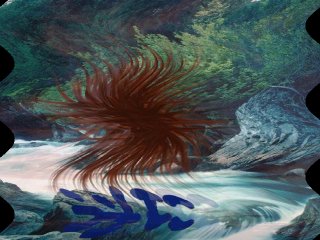
You have the following options:
- time (required)
- Specifies the duration of the transition in milliseconds.
- wavetype
- Specifies the wave movement. If you specify 0, the wave is fine at the beginning and end of the transition, and the wave is soft at the middle. A value of 1 will make the waves finer and softer at first. A value of 2 initially makes the waves softer and progressively finer. Default is 0.
- maxh
- Specifies the maximum width of the wave in pixels. Higher values result in deeper waves. The default is 50.
- maxomega
- Specify the maximum value of the wave angular velocity (rad / pixel). The higher the value, the finer the waves. The smaller the size, the softer the waves. Default is 0.2.
- bgcolor1
- Specify the initial background color in 0xRRGGBB format.
- bgcolor2
- Specify the final background color in 0xRRGGBB format. The background color starts with the initial background color and gradually changes to the final background color.
- mosaic
- A "mosaic" transition is a transition that looks like a rectangular mosaic.
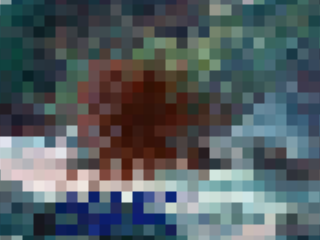
You have the following options:
- time (required)
- Specifies the duration of the transition in milliseconds.
- maxsize
- Specifies the maximum size of the mosaic rectangle. Default is 30. The higher the value, the rougher the mosaic.
- turn
- A "turn" transition is a transition in which a number of small cards are turned over.
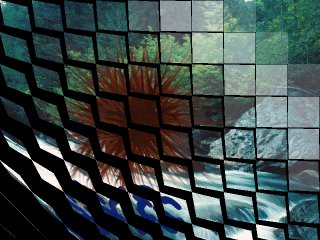
You have the following options:
- time (required)
- Specifies the duration of the transition in milliseconds.
- bgcolor
- Specify the background color in 0xRRGGBB format.
- rotatezoom
- The "rotatezoom" transition is a transition that zooms in or out while rotating the transition source (back screen in KAG).
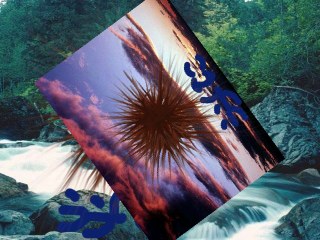
You have the following options:
- time (required)
- Specifies the duration of the transition in milliseconds.
- factor
- Specify the initial magnification. If you specify 0, it will not be visible at first. Zoom in while rotating from the center. If 2 is specified, the camera zooms out while rotating from 2x magnification to 1x magnification. You can specify more than 3 numbers and real numbers. The default is 1 (actual size).
- accel
- Specify whether to perform the scaling operation at an accelerated rate. If you specify a negative number less than or equal to -2, the beginning will be early and slow down. If you specify a positive number greater than 1, it is slow at first and gradually faster. Specify 0 for a linear movement. But it may not look linear with visual effects. Default is 0.
- twist
- Specify which direction and how much to rotate. Specify a positive number to rotate counterclockwise. Specify a negative number to rotate clockwise. The value specified is the number of revolutions. Default is 2.
- twistaccel
- Specify whether to perform the rotation motion at an accelerated rate. If you specify a negative number less than or equal to -2, the beginning will be early and slow down. If you specify a positive number greater than 1, it is slow at first and gradually faster. Specify 0 for a linear movement. The default is -2.
- rotatevanish
- The "rotatevanish" transition is a transition that zooms out while rotating the transition destination (the front screen in KAG).

You have the following options:
- time (required)
- Specifies the duration of the transition in milliseconds.
- accel
- Specify whether to perform the scaling operation at an accelerated rate. If you specify a negative number less than or equal to -2, the beginning will be early and slow down. If you specify a positive number greater than 1, it is slow at first and gradually faster. Specify 0 for a linear movement. But it may not look linear with visual effects. Default is 2.
- twist
- Specify which direction and how much to rotate. Specify a positive number to rotate counterclockwise. Specify a negative number to rotate clockwise. The value specified is the number of revolutions. Default is 2.
- twistaccel
- Specify whether to perform the rotation motion at an accelerated rate. If you specify a negative number less than or equal to -2, the beginning will be early and slow down. If you specify a positive number greater than 1, it is slow at first and gradually faster. Specify 0 for a linear movement. Default is 2.
- rotateswap
- The "rotateswap" transition is a transition in which the transition destination and the transition source are swapped while rotating. The transition destination (front screen in KAG) rotates to the back while rotating, while the transition source (back screen in KAG) comes to the front while rotating.
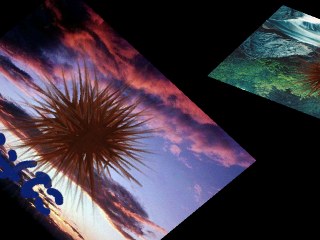
You have the following options:
- time (required)
- Specifies the duration of the transition in milliseconds.
- twist
- Specify which direction and how much to rotate. Specify a positive number to rotate counterclockwise. Specify a negative number to rotate clockwise. The value specified is the number of revolutions. Default is 1.
- bgcolor
- Specify the background color in 0xRRGGBB format.
- ripple
- The "ripple" transition is a transition in which the ripples are exchanged while giving an expression that spreads.

You have the following options:
- time (required)
- Specifies the duration of the transition in milliseconds.
- centerx
- Specifies the center X coordinate of the ripple. If omitted, it will be the center of the image.
- centery
- Specifies the center Y coordinate of the ripple. If omitted, it will be the center of the image.
- rwidth
- Specifies the fineness of the ripples. You can specify any of 16, 32, 64, 128, and the smaller the number, the finer the ripples. If omitted, 128 is assumed.
- roundness
- Specifies whether the ripple is a long vertical ellipse, a perfect circle, or a long horizontal ellipse. If you specify a number in the range 0.0 1.0 (but not including 0.0) (for example, 0.5), the result is a vertically long ellipse. Specifying 1.0 results in a perfect circle. If you specify a number greater than 1.0 (for example, 2), the result is a long ellipse. If omitted, 1.0 is assumed.
- speed
- Specifies the speed at which the waves spread. If omitted, 6.0 is assumed.
- maxdrift
- Specifies the intensity of the waves. If omitted, 24 is assumed.
NoteThe ripple transition allocates a fair amount of memory the first time it is run (about 0.5 to 4MB, depending on options), Complete the numerical calculation to execute the transition smoothly and store it in its memory. This may take some time (about 0.01 to 0.5 seconds).
If the size of the image to be transitioned, centerx, centery, rwidth, roundness, and maxdrift, are all the same, the information from the previous numerical calculation is reused. The results of numerical calculations for the last four conditions are retained (cached). When a numerical calculation is requested for new conditions beyond that, the oldest information is deleted.
Based on these, if you use this transition often, you can execute the transition once with a dummy before execution to avoid the subsequent numerical calculations.